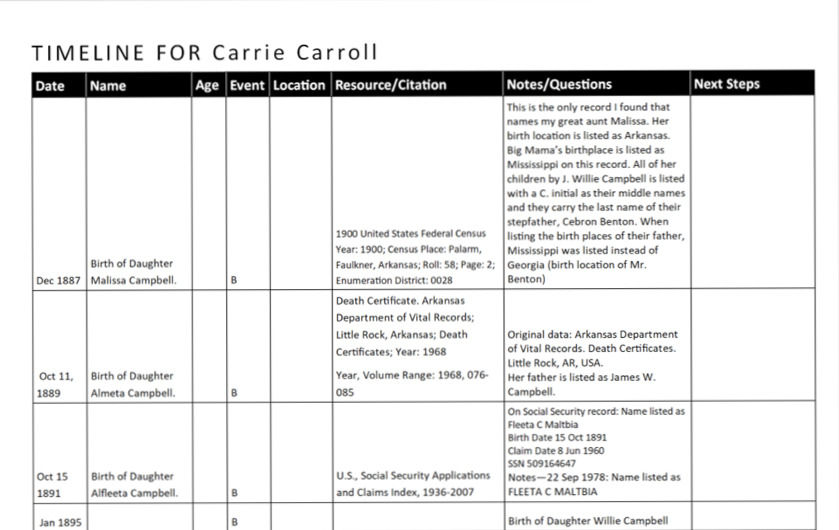DNA Project
- Oct 30, 2023
- 3 min read
Updated: Dec 9, 2023

My mentor, Nicka Smith Sewell, challenged our Patreon group to use DNA research to break through a brick wall. Part one of the "Case Studies Series: The Family DNA Project" helps us gain familiarity with DNA using the methodology outlined in "The Family DNA Project" and
"Case Studies in Gray: Identifying Shared Ancestries Through DNA and Genealogy
" webinars.
This blog is the medium I choose to answer Nicka's directives:
Step One:
Develop a list of 1-3 research questions.
Select a research question as the focus of this project.
Determine your proxy family member DNA kits based on your research question
You must have access to your proxy family member's DNA kits to complete the project
The journey to my brick walls regarding Big Mama starts with three questions:
Who were her birth parents?
Where was she born?
What happened to her first husband, my second great-grandfather John William Campbell?

WHAT I WAS TOLD.
The stories my Aunt Bruetta shared about Big Ma’s life are legendary. She outlived two husbands and the loss of two daughters. She was an independent, God-fearing Christian, a woman who did not suffer fools. She owned her land and created a safe space for her family in Pine Mountain, Faulkner County, Arkansas. She passed her eye color, shifting from gray to vibrant blue, to her descendants and her indomitable spirit to make a way out of no way. She is my great-great-grandmother. Mother of Willie Carolyn, who was the mother of Carrie Lurlean, who was the mother of Shirley Ann, who was my mother. I stand on strong shoulders. I believe it is essential that their stories are told.
Carrie Carroll was born during the tumultuous Reconstruction period that promised freedom, the full rights of citizenship, and opportunity. An increasingly violent and segregated South presented a juxtaposed reality. According to Aunt Bru, she was a young girl living tenuously with a Choctaw mother who had consumption. The affection she craved was denied as her mother tried to care for her from a safe distance. Her Dutch father took her to live with a Black family after her mother’s death. She married one of their sons, (John) William Campbell.
When her husband murdered one of the white men that tried to rape her when she was pregnant with my great-grandmother Willie, they fled Mississippi with their three children to escape the inevitable violence that would follow them. They left their home, family, and support system to build a new life. To be safe. During their journey, Daddy Willie died from pneumonia after hiding in the swamps to avoid being lynched. A young widow with three small girls and one on the way forced to provide a new life for her children. She married landowner and farmer Cebron Benton. She bore two more children with Cebron. Her daughters carry his last name in the 1900 and 1910 Federal Census Records.
A woman who declared herself a widow in records for decades when her husband started a family with another woman in the same town. My family’s history has taught me there are layers to a person’s life in the unseen spaces on historical records. I give my Ancestors grace and empathy. My Aunt Bruetta’s stories are guides, with snippets of facts and uncomfortable truths. These stories, combined with the contradicting records, leave me with questions. If she declared herself a widow with Cebron Benton, did she do the same with my second great-grandfather, Willie Campbell? Did they really run from Mississippi to Arkansas to start a new chapter in their lives?
WHAT RECORDS SAY. 10-30-23
I currently have found no direct records for Carrie Carroll before 1900. I used various records from multiple sources to garner the foundational evidence to build my case. Exhausting all available resources helps me understand how she lived, her relationships, and how my DNA matches can lead to more information.
WHERE WAS SHE BORN?






Comments